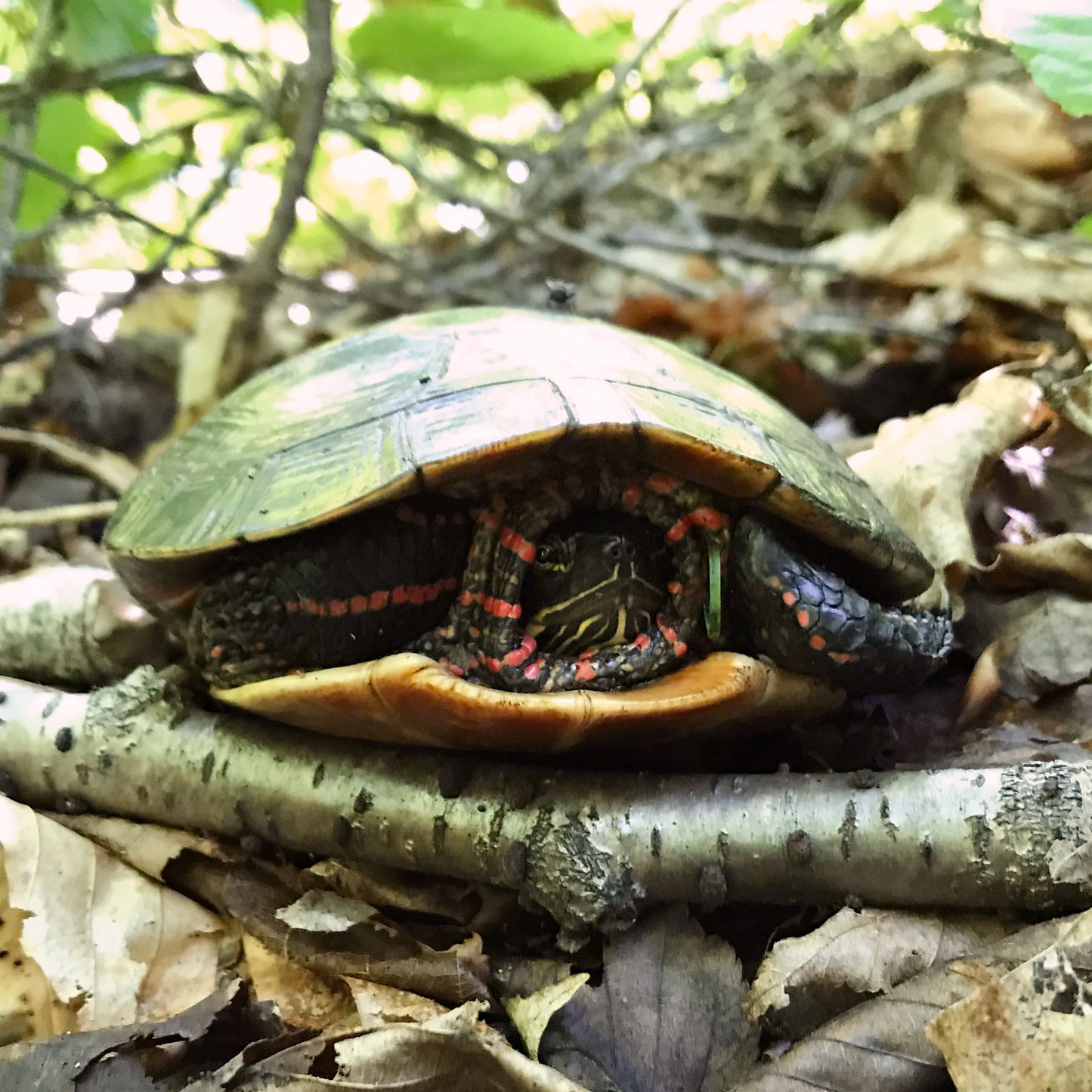
February 23, 2022
It was near the sunny wetland that flows into this calm stream where we encountered our painted turtles last summer. This little turtle, the most abundant one in North America, enjoys stagnant waters and slow-moving streams close to land areas where dense vegetation grows.
[YouTube Video https://youtu.be/hynmU7VaH2I]
Turtles are ectothermic reptiles, meaning their body temperature changes with the surrounding environment. But while you can see painted turtles basking in the sun on rocks or tree trunks in summer, what do they do in winter to avoid freezing?
Among our native species, adult turtles hibernate at the bottom of lakes, marshes, or rivers to avoid freezing. However, the hatchlings of painted turtles, from eggs laid in the spring that hatch in September, spend their first year at the nesting site, where they can endure temperatures as low as -10°C!
To survive, the turtles produce a cryoprotectant substance in their cells, which acts like antifreeze— a "superpower" shared by other amphibians like the wood frog and tree frog.
According to the Canadian Wildlife Federation, “Eight species of native freshwater turtles live in Canada. All of them are, or have a population or subspecies that is, at risk” primarily due to habitat loss from human activity and land management.
With our project, we are also protecting their habitat. Our land includes several different wetlands where we have so far located painted turtles as well as the common snapping turtle, the largest freshwater turtle in Canada.

